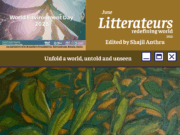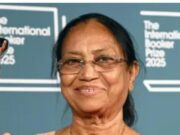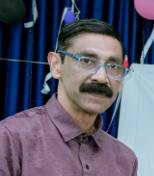Shajil Anthru, Chairman of K M Anthru Foundation and Chief Editor of Litterateur Redefining World analysis the reasons for war
“The Oxford English Dictionary defines “war” as:
(1) A state of armed conflict between different countries or different groups within a country;
(2) a state of competition or hostility between different people or groups, or
(3) a sustained campaign against an undesirable situation or activity.
There are many possible reasons for war to begin between—or more often, within—nations. Among these are economic gain, territorial gain, religion, nationalism, civil war, and political revolution. Often, countries’ leaders become primary motivators of conflict by instigating a territorial dispute, trying to control another country’s natural resources, or exercising authoritarian power over people. Countries subject to prolonged conflict can become war-torn countries that require many decades to rebuild their infrastructure, economy, and other functions.
Not all wars are formalized with official declarations of war between combatants. Conversely, not every ongoing armed conflict is classified as a war.” [Source:https://worldpopulationreview.com]
Established in 2007 by the Faculty of Law of the University of Geneva and the Graduate Institute of International and Development Studies, the Geneva Academy has acquired a global reputation for excellent teaching and research, their graduates employed around the world, promoting and protecting international humanitarian law (IHL) and human rights in governments, NGOs, international organizations and academic institutions. The Geneva Academy thus contributes to the dissemination of legal knowledge in these crucial sectors.
According to them, armed conflicts mean “all situations of armed violence that amount to an armed conflict under international humanitarian law.”
According to their study and data, the Middle East and North Africa are facing more than 45 Armed Conflicts in the following territories: Cyprus, Egypt, Iraq, Israel, Libya, Morocco, Palestine, Syria, Turkey, Yemen and Western Sahara.
Africa comes second in the number of armed conflicts per region with more than 35 non-international armed conflicts (NIACs) taking place in Burkina Faso, Cameroon, the Central African Republic (CAR), the Democratic Republic of the Congo, Ethiopia, Mali, Mozambique, Nigeria, Senegal, Somalia, South Sudan and Sudan. Several armed groups–fighting against government forces and/or against each other’s–are involved in these conflicts.
Western powers and/or neighboring countries are intervening in the conflicts that occur in Burkina Faso, Mali, Mozambique, Nigeria, and Somalia.
Asia faces 19 non-international armed conflicts (NIACs) involving 19 armed groups. These are happening in Afghanistan, India, Myanmar, Pakistan and The Philippines.
Two international armed conflicts–between respectively India and Pakistan, and between India and China–are also occurring in the region.
In Pakistan, governmental forces are fighting various armed groups acting throughout the territory, particularly Taliban-affiliated groups in the Federally Administered Tribal Areas and independence fighters in Balochistan. In the Philippines, most conflicts are occurring in the Mindanao region where government forces are fighting against several armed groups, including the Moro National Liberation Front, the Moro Islamic Liberation Front, the Bangsamoro Islamic Freedom Fighters, the Maute Group and the Abu Sayyaf Group’.
In Europe, the situation is not different. Russia is currently occupying Crimea (Ukraine), Transdniestria (Moldova), as well as South Ossetia and Abkhazia (Georgia), while Armenia is occupying parts of Nagorno Karabakh (Azerbaijan).
Europe is also witnessing an international armed conflict between Ukraine and Russia, and of two non-international armed conflicts in Ukraine opposing governmental forces with the self-proclaimed ‘People’s Republics’ of Donetsk and Luhansk in eastern Ukraine.
The six non-international armed conflicts that are occurring in the region are split evenly between Mexico and Colombia. Mexican conflict is characterized by the involvement of gangs’ drug cartels. [Source: https://geneva-academy.ch]
Shame to admit, as on this date, various conflicts and wars are occurring worldwide, making it difficult to arrive at an exact number. However, a list of major conflicts includes the Russia-Ukraine war, the Israel-Hamas war, the Syrian civil war, the Sudan civil war, and conflicts in the Democratic Republic of the Congo and Myanmar.
Conflicts in Yemen, Somalia, and South Sudan continue to cause instability and displacement.
The approximate casualty estimates from Jan 01 to Oct 04, 2024 in Ukraine, Palestine, Myanmar, Sudan and Ethiopia are 49,881, 22,386, 13,049, 9,201 and 7,846 respectively.
Civil War, Terrorist Insurgency, Drug War, Border Conflict, Ethnic violence, Political Unrest, and international conflicts based on various reasons, including economic growth and thrive for dominance over the other countries or groups.
The technology has advanced and is getting updated each second. We proudly boast about our modern civilization. But with conflicts, we are in an era worse than the barbaric age.
Inclusivity is lost, and we are in an age of high volatility and uncertainty. Even though common man, particularly women and children, are the worst hit in these conflicts, they are not one who can decide or dictate the conflicts or war. Primary motivators of any conflict arise from a leader, not for a common cause, but for a hidden cause of his own personal interests and ulterior motives.
Writers and artists have a greater role today in remolding the society to bring up leaders who work only for the common mass! who represent the common mass of the entire world while being the leader of each country or sect, whatever it is. Each country should have a leader with a global perspective and inclusivity.
We are born in this world with no choice of birthplace, economic background, gender, race, creed, shades or religion. So, every individual has the equal right to live in this universe as others.
Nations are under fire. Fire of uncertainty, volatility, impulsiveness, thrive for dominance and invasion.
Writers (Creative artists) of the world, Unite !












